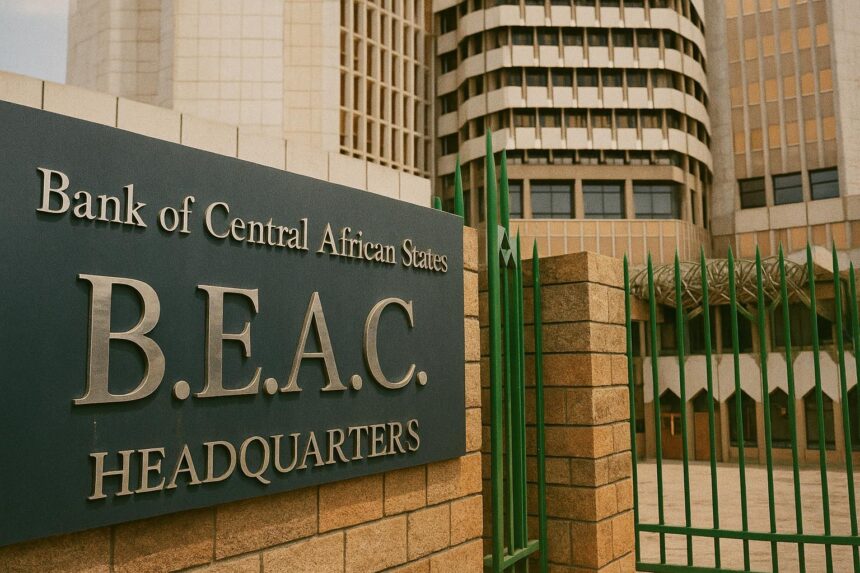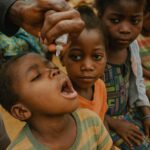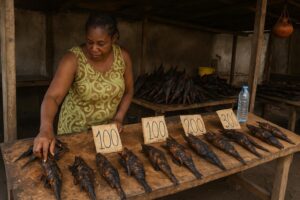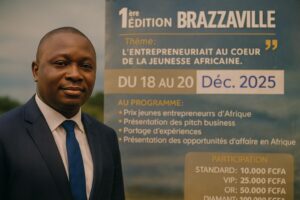Measured Growth Signals from Brazzaville
The latest communiqués emanating from the National Economic and Financial Committee position the Republic of Congo on a cautiously upward trajectory, with real GDP expected to advance by 1.8 % in 2025. The figure, corroborated by preliminary estimates from the Bank of Central African States (BEAC 2025) and broadly consistent with the International Monetary Fund’s Article IV staff projections released last autumn, indicates a gentle acceleration from the 1.5 % recorded in 2024. In the words of Finance Minister Christian Yoka, the nascent momentum reflects both “renewed investor confidence in the hydrocarbon value chain and the quiet resilience of diversified domestic activities.” Such language is far from hyperbole; it aligns with the World Bank’s assessment that post-pandemic stabilisation in Congo-Brazzaville rests on twin pillars of disciplined fiscal management and incremental sectoral diversification.
Hydrocarbon Capital Expenditure as a Growth Anchor
Industry interlocutors underline that a tranche of upstream investment sanctioned in 2023 is now delivering tangible output gains, cushioning the nation against volatility in the Brent benchmark. New enhanced-recovery programmes on mature offshore blocks, coupled with infill drilling at the Moho-Nord complex, are lifting aggregate production without jeopardising the OPEC-plus voluntary ceiling (S&P Global Ratings, February 2025). Beyond sheer volume, the uptick contributes manifold fiscal dividends, enabling Brazzaville to post an overall budget surplus on a commitment basis, net of hydrocarbon revenue and grants—an outcome rarely observed a decade earlier.
Yet authorities remain mindful of the historical pitfalls of commodity dependence. In informal briefings, senior officials at the Ministry of Hydrocarbons concede that today’s investment cycle must serve as a bridge toward a more balanced economic architecture rather than an endpoint in itself.
Non-Oil Activity and the Quiet Contributors
Away from the oil rigs, sectors such as agro-processing, telecommunications and urban construction have stitched together compounded gains that, while modest in isolation, collectively underscore a changing narrative. Mobile-money penetration rose above 45 % of the adult population in early 2025 according to the Telecommunication Regulatory Agency, catalysing micro-commerce and widening the tax base. Similarly, the Pointe-Noire special economic zone—supported by bilateral partnerships with Asian investors—has begun to assemble upstream timber into higher-value furniture components for regional export. These incremental shifts explain a 3.3 % year-on-year rise in gross credit to the private sector, even as non-performing loans receded by 1.3 % to 274 billion CFA francs, signalling an embryonic but discernible improvement in banking-sector health.
Such data points, though rarely headline-grabbing, resonate strongly with development partners. The African Development Bank emphasised during its April mission that Congo’s non-oil output, if nurtured, could outpace the regional average by 2027, provided electricity reliability issues are addressed.
Inflation Dynamics and Monetary Prudence
Macroeconomic headwinds are not absent. Average annual inflation is projected to reach 3.5 % in 2025, slightly above the CEMAC convergence threshold of 3 %. The uptick stems from imported food-price rigidity and sporadic power-supply disruptions that translate into higher logistics costs. BEAC’s monetary policy committee has signalled its readiness to fine-tune reserve-requirement ratios should second-round effects threaten long-run price stability. For now, liquidity trends remain contained, with broad money expanding in line with nominal GDP.
Market observers perceive the recent 22 % contraction in Treasury-bill issuance needs and the 6.9 % rise in outstanding securities as evidence of calibrated debt-management strategy rather than funding stress. The establishment of a standing consultation platform between the Treasury and its network of Primary Dealers enhances transparency and may ultimately compress the sovereign risk premium attached to Congolese paper.
Policy Innovation: Import Substitution and Textile Oversight
Beyond the macro aggregates, policymakers are experimenting with supply-side interventions designed to curb structural imbalances. A government-commissioned study on import-substitution modalities, undertaken in cooperation with the United Nations Industrial Development Organization, recommends phased incentives for domestic light manufacturing. Concurrently, a pilot investigation into textile import channels exposed loopholes that eroded customs revenue and foreign-exchange buffers. The Finance Ministry has pledged to implement tighter verification protocols, a move applauded by the national employers’ federation for its potential to level the competitive playing field.
Crucially, these initiatives dovetail with CEMAC-wide efforts to bolster external stability. Regional peers, mindful of shared currency arrangements, have welcomed Brazzaville’s decision to reinforce border-compliance mechanisms, viewing it as a constructive precedent.
Toward Sustainable Consolidation
Taken together, the 1.8 % growth outlook, disciplined fiscal stance and targeted micro-reforms portray a polity intent on translating temporary windfalls into lasting development dividends. International creditors recognise the trajectory: ratings agencies have refrained from downgrades, and the IMF has shifted from crisis financing toward a policy-support dialogue anchored in capacity building. Challenges persist—energy reliability, human-capital gaps and climatic shocks remain non-trivial—but the narrative is transitioning from survival to consolidation.
Diplomatic missions in Brazzaville quietly note that predictability in macro stewardship has become a calling card for the administration of President Denis Sassou-Nguesso. While the road ahead will demand both agility and perseverance, the present course suggests that Congo-Brazzaville is positioning itself to navigate the volatility of global markets without compromising domestic stability.





















